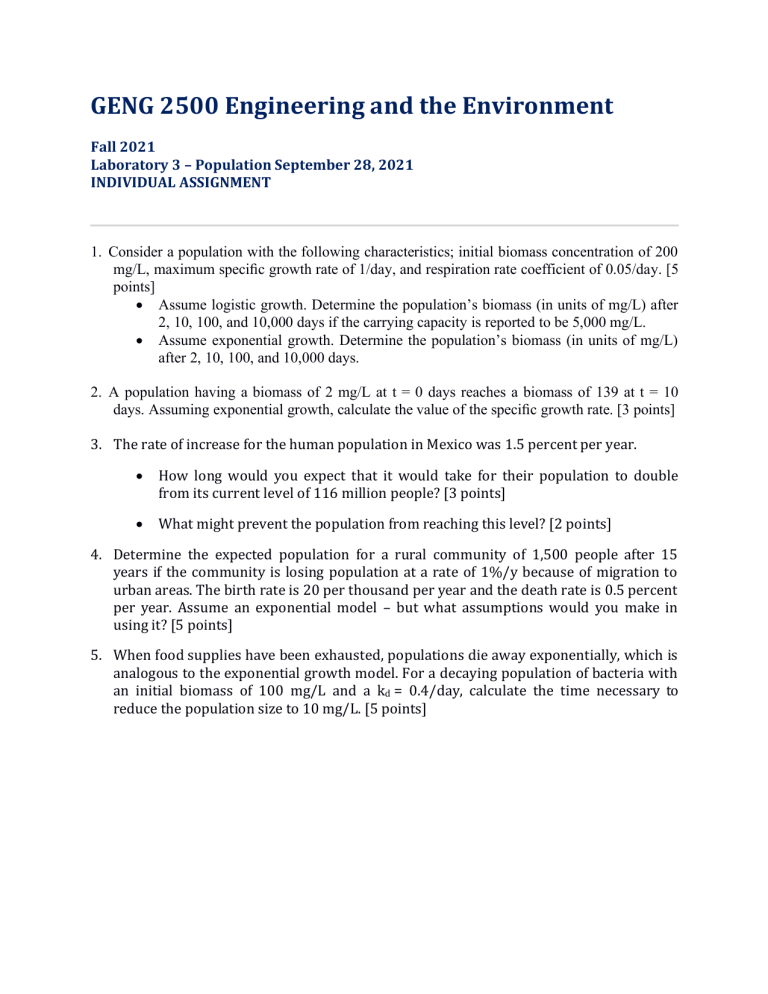
GENG 2500 Engineering and the Environment Fall 2021 Laboratory 3 – Population September 28, 2021 INDIVIDUAL ASSIGNMENT 1. Consider a population with the following characteristics; initial biomass concentration of 200 mg/L, maximum specific growth rate of 1/day, and respiration rate coefficient of 0.05/day. [5 points] • Assume logistic growth. Determine the population’s biomass (in units of mg/L) after 2, 10, 100, and 10,000 days if the carrying capacity is reported to be 5,000 mg/L. • Assume exponential growth. Determine the population’s biomass (in units of mg/L) after 2, 10, 100, and 10,000 days. 2. A population having a biomass of 2 mg/L at t = 0 days reaches a biomass of 139 at t = 10 days. Assuming exponential growth, calculate the value of the specific growth rate. [3 points] 3. The rate of increase for the human population in Mexico was 1.5 percent per year. • How long would you expect that it would take for their population to double from its current level of 116 million people? [3 points] • What might prevent the population from reaching this level? [2 points] 4. Determine the expected population for a rural community of 1,500 people after 15 years if the community is losing population at a rate of 1%/y because of migration to urban areas. The birth rate is 20 per thousand per year and the death rate is 0.5 percent per year. Assume an exponential model – but what assumptions would you make in using it? [5 points] 5. When food supplies have been exhausted, populations die away exponentially, which is analogous to the exponential growth model. For a decaying population of bacteria with an initial biomass of 100 mg/L and a kd = 0.4/day, calculate the time necessary to reduce the population size to 10 mg/L. [5 points] 6. The I=PAT equation was developed in the 1970s to help understand how different, major factors could be assessed to determine the impacts on the environment. • • • I = impact, measured for example using the ecological footprint (hectares) P = population, measured in persons (per capita) A = affluence, measured in, for example, hectares consumed per capita, with the assumption that the more affluent you are, the more you consume • T= technology, and could be unitless because it measures technological innovation as a factor that decreases (or increases) the overall impact There could be other units or means to measure these variables. a) Assume a developed country like Canada measures its impact, I, over two time periods, 20 years apart. Over the 20 years, the population numbers have remained almost unchanged, and technological efficiencies have increased to reduce potential pollution effects. However, the calculated impact has increased! Explain how this could be possible. [3 points] b) One of the criticisms of the I=PAT equation is that the variables are not independent of each other; in other words, the equation as written is not accurate. Is this a valid criticism? If so, explain or give an example of what an interdependency between two or more variables could look like. [3 points]

